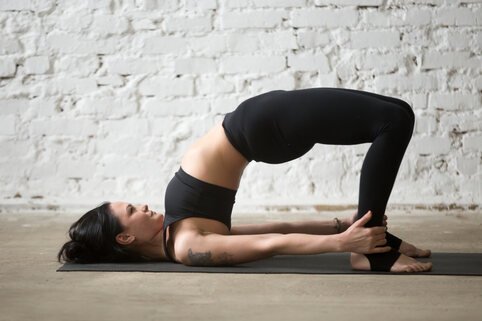What exactly are glutes?
The buttocks or the hips are known as Glutes. It is the strongest and the largest muscle in the body. Glutes help in maintaining the flexibility, posture, imbalances, and overall movement of the hip. Provides help to the lower part of the body as well.
How do people tend to have weak glutes?
In today’s world of technology and work from home, people are more in the habit of not moving around and using glute muscles properly, that is the reason for weak or underactive glutes. As glutes are not activated properly, it creates a problem for our legs during workouts. Knee pain, tight hip flexors, low back pain, and weak ankles and feet are all indications of poor or inactive glutes.
What does glute activation mean?
In a basic sense, glutes that are under-active or weak remain ‘inactive’ or ‘switched off. This could indicate that the muscles are weak and aren’t used as much as they should be during physical activities. Glute activation is the process of ‘firing up’ or ‘activating’ the muscles to strengthen them. Consider glute activation as a way to warm up your muscles before a workout. This helps you be more efficient and safer during your workout by increasing the warmth and flexibility of your muscles.
What is the importance of glute activation?
he most important and obvious reason is that you want to strengthen them. These muscles serve to develop your core and support a variety of compound actions and workouts, so they have a big impact on your overall body strength. Strong glute muscles also aid in the prevention and treatment of muscle imbalances, which can contribute to mobility problems. An ideal example would be a hip imbalance caused by weak glutes.
Excessive rotation of the femur (thigh bone) might result, in knee pain. Another example is that weaker glute muscles might lead to hamstring or groin muscle pulls. In practically every sport, strong glutes are required for changing directions, accelerating, decelerating, and executing explosive jumps. Sprinting is one of the most efficient exercises for stimulating the glutes when it comes to running because it activates more of the gluteus maximus muscle than a vertical jump. Strong glutes allow athletes to move faster, more efficiently, and explosively.
Glute activation Workouts
Glute Bridge
The glute bridge is a versatile motion that may be utilized for both activation and glute strength development. It’s a terrific technique for strengthening the glutes and opening up the hips since it is blocked or relax the hip flexors by using glutes to drive hips into extension. This is known as reciprocal inhibition. There could be a variation in it by adding mini bands to the workout. This version is particularly useful if you find it difficult to feel your glutes working and instead rely on your hamstrings. It can be done as a bilateral (two-leg) or unilateral (one-leg) movement to assist rectify imbalances and push the move further. These is the most basic glute activation exercises
Donkey Kicks
It is an old technique but it serves the purpose the best. Working on core stability and hip extension unilaterally is a fantastic move. This technique will activate glutes while working on the entire core. The knee should not curve out and the foot should push straight up to the ceiling. Allowing elbows to flex and to raising the leg is not a good idea. Hold and squeeze glute at the top, then lower and repeat the process. It’s also important to keep hips square to the ground. Rushing these reps will only harm the body and muscle.
Fire Hydrants
This glute medius abduction technique is a must-do if hip stability is needed to be improved. The Fire Hydrant is an excellent way to activate the glute medius, a key muscle for maintaining balance and avoiding ankle, knee, and hip injuries. A powerful glute medius will increase running as well as the capability to quickly change directions.
Placing hands underneath the shoulder and knees underneath the hips. While raising one leg try and flex your foot. Then, with one leg raised to the side and the knee bent to 90 degrees, elevate the other leg to the side. Attempt to keep the foot from rising above the knee or the knee from rising above the foot. As you lift, squeeze the butt cheek firmly. However, it is preferable to concentrate on elevating your knee rather than your foot. It is one of most promising glute activation exercises.
Glute activation is as necessary as signs your glutes are growing. There is a different way to measure and see if the glutes are growing or not. Doing these workouts only helps the body function better and makes anyone feel more confident about themselves.
